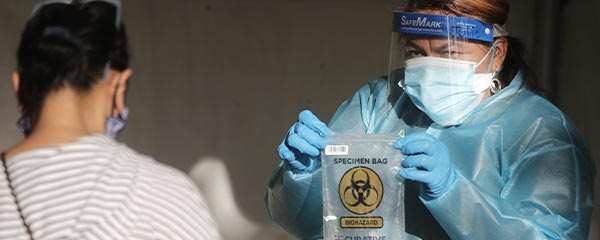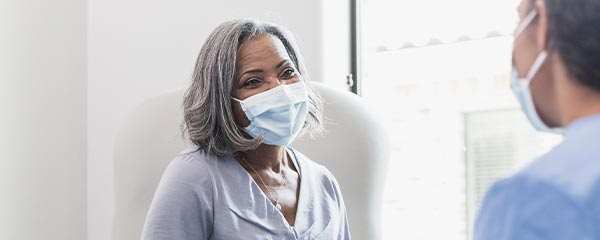Story Highlights
- Public consumption, confidence help gauge current recovery status
- Support for in-person schooling important for employment rate
- Vaccine acceptance helps predict likely ease of distribution in 2021
Editor's Note: The research below was conducted in partnership between Franklin Templeton and Gallup.
WASHINGTON, D.C. -- As the U.S. heads into a tough winter with COVID-19 infections surging to record levels, decision-makers face tough questions about how to gauge the country's economic trajectory in the months before a vaccine can be distributed widely enough to bring the pandemic to an end.
The Franklin Templeton-Gallup Economics of Recovery study tracks four key indicators unavailable from government sources of economic data that are important for assessing Americans' ability and willingness to participate in the country's economy as consumers and employees amid the pandemic. They are:
-
Levels of public consumption - i.e., the percentage of Americans who report buying goods and services that require them to be in public places
-
Americans' confidence in their ability to protect themselves from COVID-19
-
The percentage of Americans who favor full-time, in-person schooling, a condition that has important implications for the workforce, most notably by allowing parents who cannot do their jobs from home to maintain full-time employment
-
Americans' willingness to receive a COVID-19 vaccine when it becomes available

Clover graphic. Four key indicators of economic recovery from the COVID-19 crisis. These include confidence in the ability to protect oneself from COVID-19, public consumption, full-time in-person schooling and COVID-19 vaccine uptake.
Taken together, the metrics track how the public is interpreting and reacting to the pandemic, specifically the aspects of it most relevant to economic recovery. All four indicators were updated in the most recent results, based on 5,026 web-based surveys completed Nov. 1-6. This study is conducted via an opt-in web panel. The sample has been adjusted statistically to ensure it represents key subgroups of the U.S. adult population in their proper proportions.
Public Consumption
Public consumption is the most direct indicator of economic recovery because it measures activity in industries that have been hit hardest by the pandemic -- i.e., those that rely on consumers' willingness to spend time in public, in proximity with people they don't know. They include air travel, hospitality, restaurants, gyms, hair salons and other businesses required to shut down altogether at the outset of the crisis and that continue to operate under health restrictions today.
These figures have been very stable since the summer months. While daily infections and deaths from the virus remain high, Americans appear to be in a holding pattern; most forms of public consumption have stayed relatively flat as Americans' level of confidence that they can protect themselves from the virus in public has shown little movement.
| July | August | September | October | November | |||||||||||||||||||||||||||||||||||||||||||||||||||||||||||||||||||||||||||||||||||||||||||||||
|---|---|---|---|---|---|---|---|---|---|---|---|---|---|---|---|---|---|---|---|---|---|---|---|---|---|---|---|---|---|---|---|---|---|---|---|---|---|---|---|---|---|---|---|---|---|---|---|---|---|---|---|---|---|---|---|---|---|---|---|---|---|---|---|---|---|---|---|---|---|---|---|---|---|---|---|---|---|---|---|---|---|---|---|---|---|---|---|---|---|---|---|---|---|---|---|---|---|---|---|
| % | % | % | % | % | |||||||||||||||||||||||||||||||||||||||||||||||||||||||||||||||||||||||||||||||||||||||||||||||
| Visited a restaurant in the past 48 hours | 19 | 20 | 21 | 24 | 22 | ||||||||||||||||||||||||||||||||||||||||||||||||||||||||||||||||||||||||||||||||||||||||||||||
| Visited a salon or barbershop in the last 48 hours | 7 | 7 | 7 | 7 | 8 | ||||||||||||||||||||||||||||||||||||||||||||||||||||||||||||||||||||||||||||||||||||||||||||||
| Spent the night in a hotel in the last 48 hours | 5 | 6 | 5 | 6 | 7 | ||||||||||||||||||||||||||||||||||||||||||||||||||||||||||||||||||||||||||||||||||||||||||||||
| Booked a flight that departs within 30 days | 15 | 17 | 14 | 13 | 16 | ||||||||||||||||||||||||||||||||||||||||||||||||||||||||||||||||||||||||||||||||||||||||||||||
| FRANKLIN TEMPLETON-GALLUP ECONOMICS OF RECOVERY STUDY | |||||||||||||||||||||||||||||||||||||||||||||||||||||||||||||||||||||||||||||||||||||||||||||||||||
The Franklin Templeton-Gallup study compiles such results for 14 different public consumption activities, standardizing the scores in an overall consumption index. Like the individual consumption activities listed above, the total index score has changed little over the past four months.
Confidence in the Ability to Protect Oneself From Infection
Americans' confidence in their ability to protect themselves from COVID-19 is another key indicator for the close relationship Gallup has found between confidence and public consumption in statistical modeling of consumption behavior. The more responsible confidence can be built -- the type of confidence that aligns with public health recommendations -- the better chance local economies have to recover. The Franklin Templeton-Gallup research has also demonstrated that local mandates like mask-wearing can significantly increase confidence.
Americans' level of confidence that they can protect themselves from the virus has been steady in recent months, helping explain the stability in public consumption behaviors during that time. The lack of change in these measures likely reflects in part the lack of progress in controlling the virus since the summer months. In the November survey, 30% of Americans said they were "very confident" they could protect themselves when out in public, similar to the 28% who responded this way in July.

Line graph. Americans' confidence they can protect themselves from COVID-19 in public. Since July, between 28% and 32% of Americans have said they are "very confident" they could protect themselves from COIVD-19 in public.
Full-time, In-person Schooling
Many countries that have imposed new lockdowns amid surging COVID-19 cases -- Germany, France, Ireland -- are prioritizing keeping schools open in recognition of the potential long-term impact on student learning. In the U.S., there are also strong equity concerns, as students in lower-income households or those with special needs are particularly likely to fall behind as a result of not being in a school environment.
The need to care for students learning at home also has economic implications for families. Many parents, especially those with lower income and education levels, work in occupations that cannot be done from home and have had to work reduced hours, take leave or even give up their jobs altogether.
Those critical considerations must be weighed against schools' ability to minimize the health risks for students and their families. The November Franklin Templeton-Gallup survey finds that 62% of Americans support their local community providing in-person schooling for elementary and secondary students, little changed from 58% in October.
| Yes | No | ||||||||||||||||||||||||||||||||||||||||||||||||||||||||||||||||||||||||||||||||||||||||||||||||||
|---|---|---|---|---|---|---|---|---|---|---|---|---|---|---|---|---|---|---|---|---|---|---|---|---|---|---|---|---|---|---|---|---|---|---|---|---|---|---|---|---|---|---|---|---|---|---|---|---|---|---|---|---|---|---|---|---|---|---|---|---|---|---|---|---|---|---|---|---|---|---|---|---|---|---|---|---|---|---|---|---|---|---|---|---|---|---|---|---|---|---|---|---|---|---|---|---|---|---|---|
| % | % | ||||||||||||||||||||||||||||||||||||||||||||||||||||||||||||||||||||||||||||||||||||||||||||||||||
| Oct-20 | 58 | 42 | |||||||||||||||||||||||||||||||||||||||||||||||||||||||||||||||||||||||||||||||||||||||||||||||||
| Nov-20 | 62 | 38 | |||||||||||||||||||||||||||||||||||||||||||||||||||||||||||||||||||||||||||||||||||||||||||||||||
| FRANKLIN TEMPLETON-GALLUP ECONOMICS OF RECOVERY STUDY | |||||||||||||||||||||||||||||||||||||||||||||||||||||||||||||||||||||||||||||||||||||||||||||||||||
Vaccine Acceptance
While preventative measures like masks and social distancing help manage the severity of the pandemic, the dissemination of an effective vaccine promises to end it. But that is a massive task that will take months. One complicating factor is that many Americans are currently hesitant to receive the vaccine. Gallup's most recent results for this question indicate 63% would agree to be vaccinated right away if an FDA-approved vaccine were available to them at no cost.
An experiment in the October-Franklin Templeton-Gallup survey found that public willingness to get the vaccine increases when Americans receive reassuring information about the approval process, side effects and efficacy. Thus, strong marketing of a truly effective and safe vaccine could significantly boost its life-saving effects.
Implications
Collectively, these four key indicators provide businesses and policymakers with a range of useful insights about Americans' economic behavior in the ever-changing context of the pandemic. Among the most consistent findings has been the stability of public consumption activities as the crisis has extended months longer than most Americans anticipated.
The two more forward-looking indicators -- support for in-person schooling and readiness to get a coronavirus vaccine when it is available -- offer insights about the likely pace of change in 2021 as Americans weigh ongoing fears of the disease against a widespread eagerness for life to return to normal. As the vaccine is distributed through the population in the first half of the year, confidence and public consumption behaviors will likely rise, helping determine the speed and magnitude of recovery from one of the most acute economic crises in U.S. history.
To receive ongoing updates about findings from the Franklin Templeton-Gallup Economics of Recovery Study, please sign up here. To learn more about the study, please visit this page.




